No products in the cart.
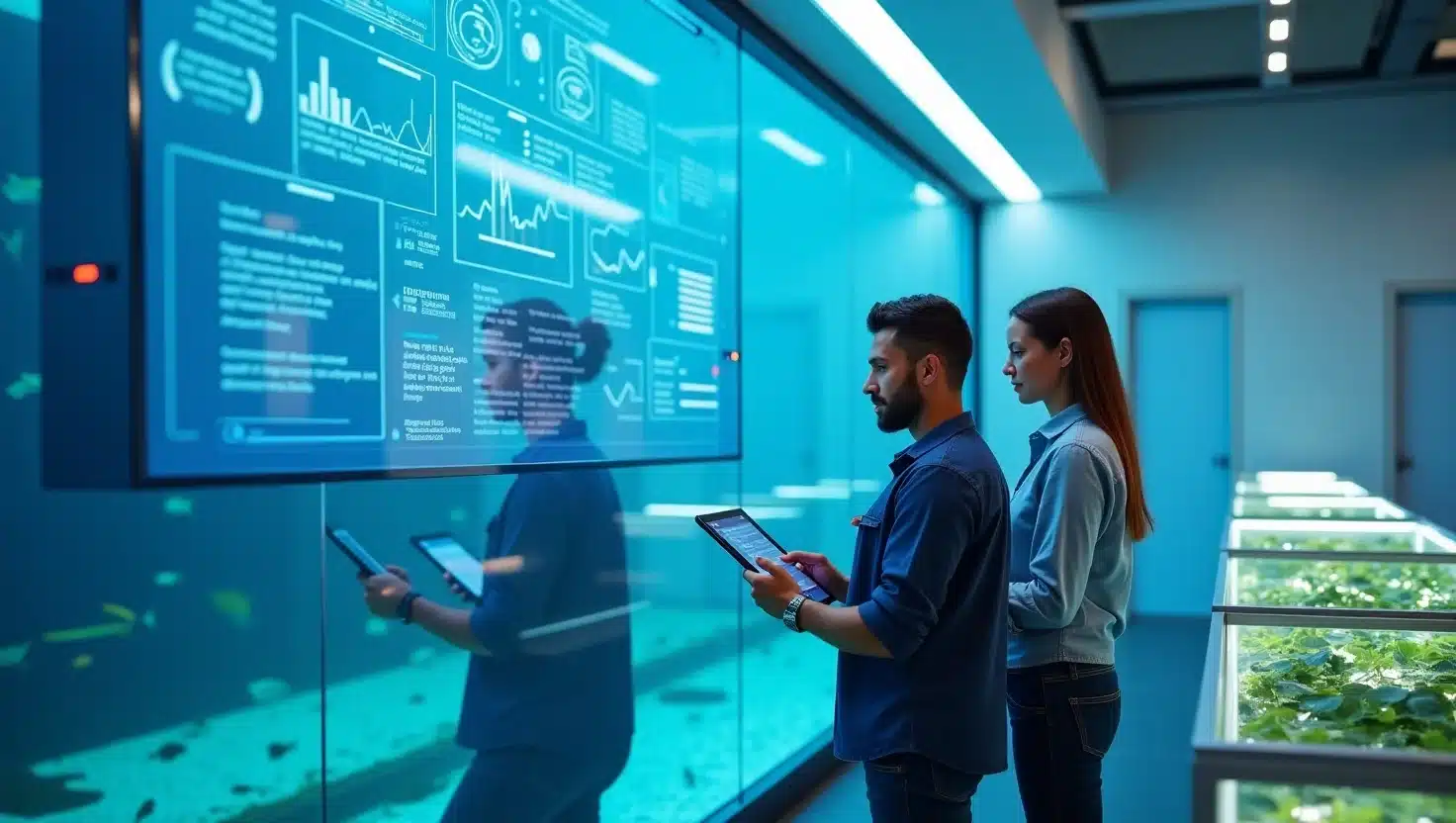
1. Introduction:
The world’s appetite for seafood is growing fast, yet traditional fish farming methods are struggling to keep up. Overfeeding, disease outbreaks, and inefficient monitoring are just a few of the challenges fish farmers face today. As global demand continues to rise, aquaculture must evolve, or risk falling behind.
Enter AI in aquaculture, a game-changing solution that blends artificial intelligence, automation, and smart sensors to make fish farming more efficient, sustainable, and profitable. From real-time water quality monitoring to predictive disease control, AI is helping fish farms of all sizes reduce waste, improve yields, and streamline operations.
Smart fish farming isn’t just a futuristic idea, it’s already happening. In places like Norway, Indonesia, and the U.S., farmers are using computer vision to count fish, AI algorithms to feed them optimally, and IoT devices to maintain ideal living conditions. Technologies like aquaculture digital twins, AI fish health monitoring, and robotic fish feeders are no longer experimental, they’re the new standard.
This article explores how AI is transforming the fish farming industry from the inside out. Whether you’re a tech-savvy aquaculture entrepreneur or a curious stakeholder, understanding these innovations could be your biggest competitive edge.
2. What is AI in Aquaculture?
Artificial Intelligence (AI) in aquaculture refers to the use of smart technologies, like machine learning, computer vision, and IoT sensors, to optimize and automate various fish farming processes. Unlike traditional methods, which often rely on manual observation and guesswork, AI enables real-time data collection and decision-making based on predictive analytics.
For instance, computer vision in fish farming helps automatically monitor fish behavior, detect signs of illness, and count stock accurately. Similarly, AI-powered feeding systems use real-time sensor data to deliver the right amount of feed at the right time, reducing overfeeding and increasing efficiency.
Machine learning algorithms analyze historical and environmental data to detect patterns, such as predicting disease outbreaks or identifying when water quality dips below safe levels. Paired with aquaculture digital twins, virtual models of real-time farming environments, AI can simulate outcomes before they happen.
These intelligent systems are designed not only for large industrial farms but also for small and mid-sized operations looking to scale sustainably. By integrating AI into aquaculture systems, farmers gain greater control over operations, improved fish health, and reduced operational costs.
In short, AI isn’t replacing farmers, it’s empowering them to make smarter, data-driven decisions.
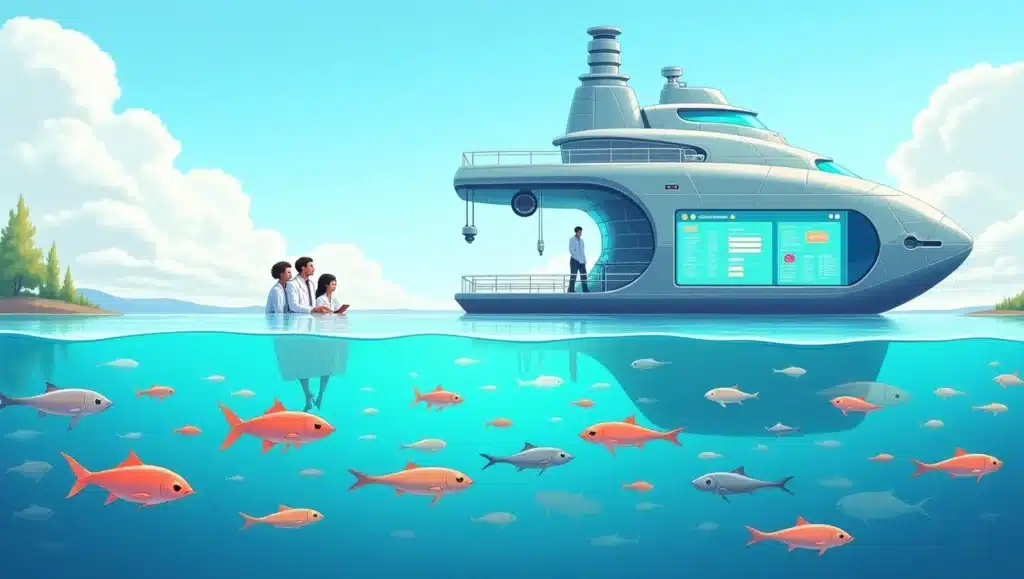
3. Key Applications of AI in Fish Farming
Artificial intelligence is transforming fish farming by targeting core challenges with smart, automated solutions. One of the most impactful applications is AI-powered feeding systems. These tools use real-time data, like fish behavior, water temperature, and oxygen levels, to adjust feeding schedules and amounts. The result? Reduced overfeeding and significant savings on feed costs.
Another game-changer is AI-driven water quality monitoring. Using IoT sensors and machine learning models, farmers can continuously track pH, salinity, temperature, and dissolved oxygen. Alerts are triggered automatically if any parameter moves outside the optimal range, preventing fish stress or mortality.
Fish health monitoring is also seeing major improvements through computer vision and deep learning. AI can detect abnormal swimming patterns, color changes, or wounds before they escalate into full-blown outbreaks. Early detection helps farmers act fast and reduce antibiotic use.
Additionally, predictive analytics is enabling smarter decision-making. Farmers can now forecast yields, predict diseases, and optimize harvest schedules using historical and environmental data.
Combined with aquaculture digital twins, these tools create a powerful ecosystem where virtual simulations can predict real-world outcomes, minimizing risk and maximizing productivity.
4. Benefits & ROI of Smart Aquaculture Tech
Integrating AI into fish farming doesn’t just improve operations, it delivers measurable returns. One of the clearest benefits is cost reduction. Smart feeding systems, for example, can cut feed waste by up to 30%, directly improving profit margins. Since feed represents up to 70% of total aquaculture costs, this is a game-changer for both small and large farms.
AI also boosts productivity and sustainability. By maintaining optimal water conditions and minimizing stress, fish grow faster and healthier. This leads to fewer mortalities and better quality harvests, key outcomes for premium market pricing.
Another major advantage is early disease detection. AI-driven monitoring helps identify issues before they escalate, significantly reducing the use of antibiotics and improving animal welfare. That’s not just good ethics, it’s good business in a market where sustainable practices are increasingly rewarded.
Finally, predictive analytics allow for smarter planning. Forecasting stock growth, harvest timing, and resource needs helps optimize labor and logistics, ensuring you’re always a step ahead.
The bottom line? AI in aquaculture isn’t just a trend, it’s an investment with clear ROI, improved operational control, and a path toward more resilient and sustainable fish farming.
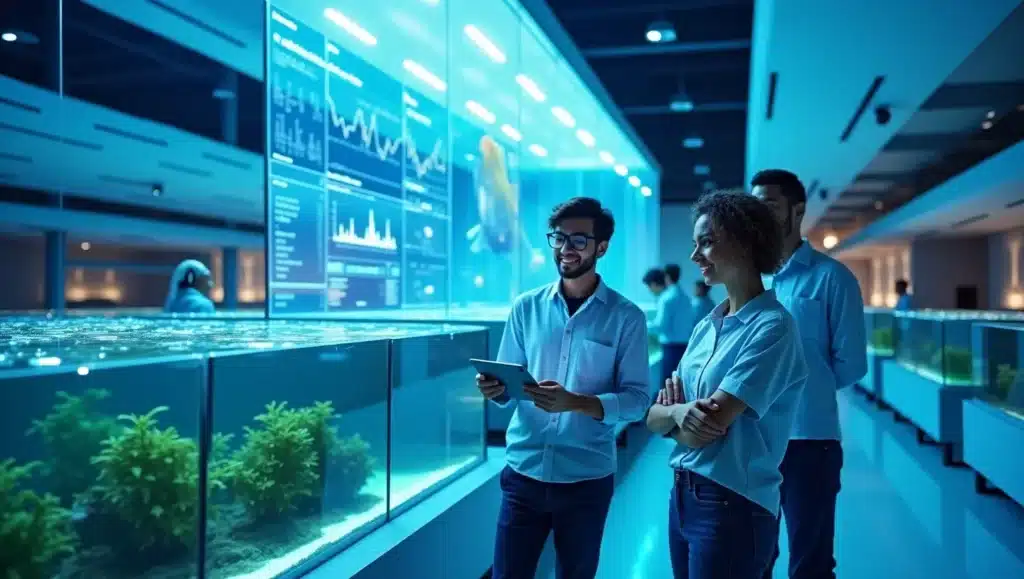
5. Real-World Examples & Success Stories
Across the globe, pioneering fish farms are proving the real value of AI in aquaculture. One standout example is eFishery, an Indonesian startup that developed smart feeding devices using AI and IoT. These systems not only reduce feed waste but also help small-scale farmers improve yield consistency and income.
In Norway, Aquabyte has introduced computer vision-based fish health monitoring in salmon farms. Their technology detects early signs of lice and other diseases, reducing dependency on antibiotics and improving fish welfare. This proactive approach has lowered mortality rates and ensured compliance with strict EU sustainability standards.
Another impressive use case comes from Chile, where mid-sized farms are implementing digital twin systems, virtual replicas of their aquaculture setups. These allow farmers to simulate environmental changes and feeding schedules, optimizing outcomes before taking real-world action.
What all these stories share is a common thread: data-driven decision-making. By embracing smart technologies, these farms have enhanced productivity, reduced costs, and built resilience against environmental and market shocks.
These examples serve as proof that AI in fish farming isn’t just theoretical, it’s actionable and effective. For those still relying on manual methods, these success stories offer a compelling reason to embrace the shift.
6. Challenges and Limitations
While AI in aquaculture offers incredible benefits, it’s not without its hurdles, especially for small and mid-sized fish farms. One of the biggest challenges is the initial cost of implementation. Smart feeding systems, underwater cameras, and sensor networks can require significant upfront investment, making it harder for smaller operators to adopt the technology.
Another barrier is the lack of digital infrastructure in many rural or coastal areas. Reliable internet connectivity is essential for real-time data transmission and remote monitoring, and in its absence, even the best AI tools become ineffective.
There’s also a knowledge gap. Many farmers lack the technical training needed to understand, manage, or troubleshoot AI systems. This creates a dependency on external vendors, which can delay action when issues arise.
In addition, concerns about data privacy, especially when using cloud-based platforms, have made some stakeholders hesitant to fully embrace digital transformation.
However, these limitations aren’t insurmountable. Many providers now offer AI-as-a-Service models, allowing farmers to pay monthly instead of upfront. Governments and NGOs are also stepping in with funding and training initiatives to close the digital divide.
Solving these problems will be key to ensuring AI in aquaculture becomes accessible, scalable, and inclusive for all.
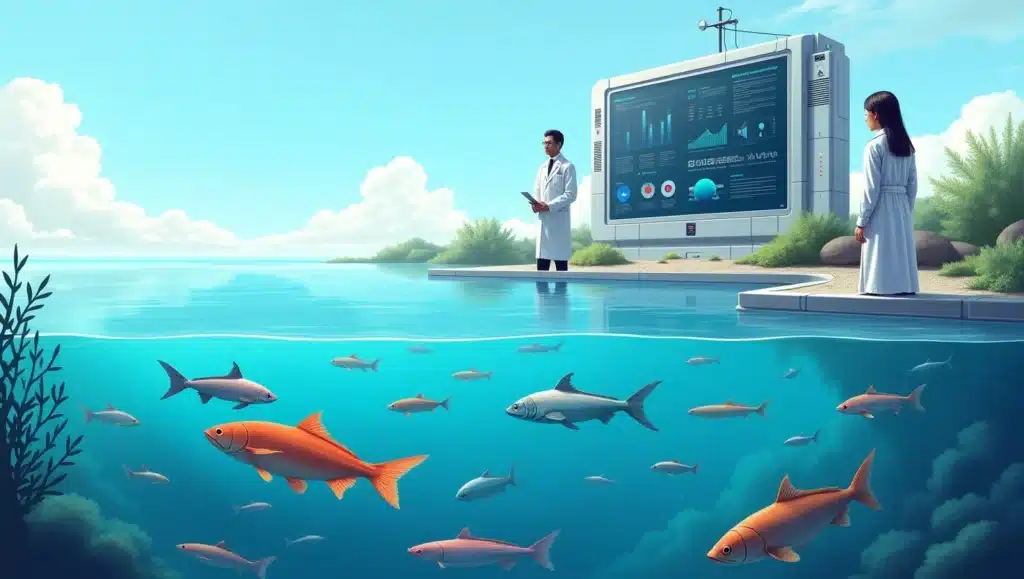
7. Conclusion & Call to Action
The transformation of fish farming through AI isn’t just a possibility, it’s already happening. From smart feeding systems and water quality monitoring to disease detection and yield prediction, AI in aquaculture is delivering real, measurable benefits. Farms that have embraced these tools are seeing improved efficiency, reduced waste, and healthier fish, all while staying competitive in a demanding global market.
But while the technology is powerful, adoption still lags due to cost, infrastructure, and training barriers. The good news? New solutions, like AI-as-a-Service, government grants, and plug-and-play devices, are making smart aquaculture more accessible than ever.
If you’re a fish farmer looking to modernize, now is the time to explore your options. Start small, maybe with an AI-powered feeder or basic water monitoring system, and scale as you see results. For entrepreneurs, investors, and researchers, this is a rapidly expanding field full of untapped opportunities.
Ready to future-proof your fish farm? Explore trusted AI aquaculture providers, subscribe to industry newsletters, or consult with a tech advisor today. The shift to smart fish farming isn’t just about innovation, it’s about survival, sustainability, and staying ahead in a competitive world.
FAQs:
Q1. What is AI in aquaculture and how does it work?
AI in aquaculture uses smart tech like sensors, machine learning, and computer vision to monitor fish health, automate feeding, and predict outcomes in real time.
Q2. How is AI improving fish farming efficiency?
AI reduces feed waste, detects diseases early, and improves water quality management—leading to lower costs and higher yields for fish farmers.
Q3. Is AI affordable for small or medium-sized fish farms?
Yes, many companies offer AI-as-a-Service and modular systems that allow smaller farms to adopt AI without high upfront costs.
Q4. What are the disadvantages of using AI in aquaculture?
Common limitations include high initial investment, lack of internet access in rural areas, and the need for technical expertise and training.
Q5. What are some examples of AI applications in aquaculture?
Popular applications include smart feeders, water quality sensors, fish health tracking, and digital twins to simulate farming conditions.
Related Articles
Livestock Farming
The Future of Farming: Why AI-Powered Tractors Are Gaining Popularity
1. Introduction: Across the world, farmers are grappling with rising costs, shrinking...
Livestock Farming
Using AI to Track Livestock Health and Prevent Disease Outbreaks
1. Introduction: In recent years, livestock farmers around the world have faced...
Livestock Farming
How Machine Learning Is Changing Fertilizer Application on Farms
1. Introduction: For decades, farmers have applied fertilizer using general formulas, blanket...
Livestock Farming
What Is Smart Farming? A Beginner’s Guide to AI in Agriculture
1. Introduction: By 2050, global food demand is expected to increase by...
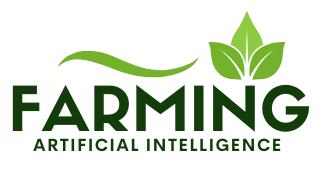

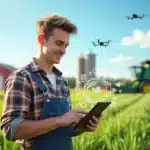
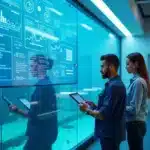

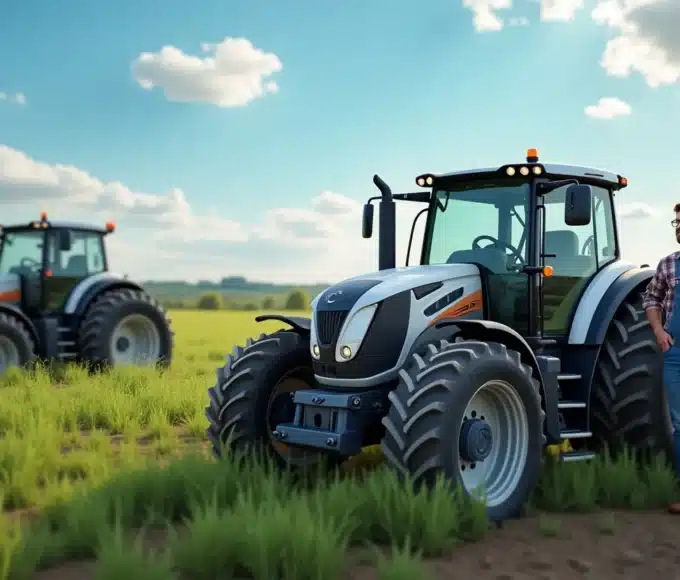
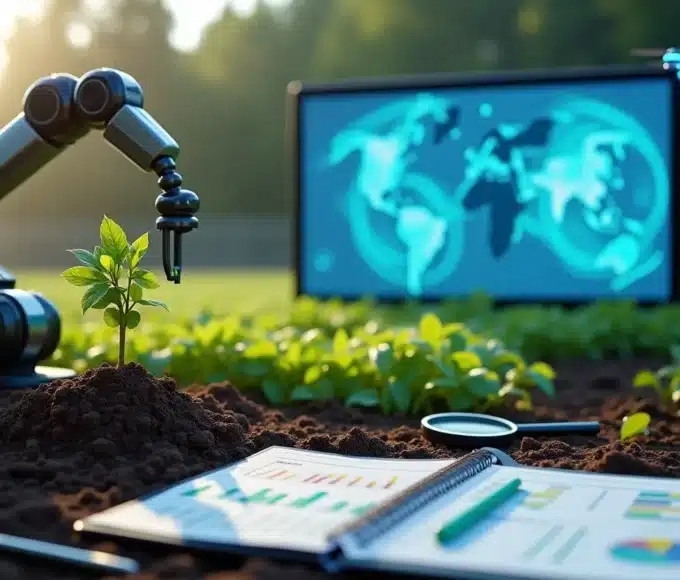
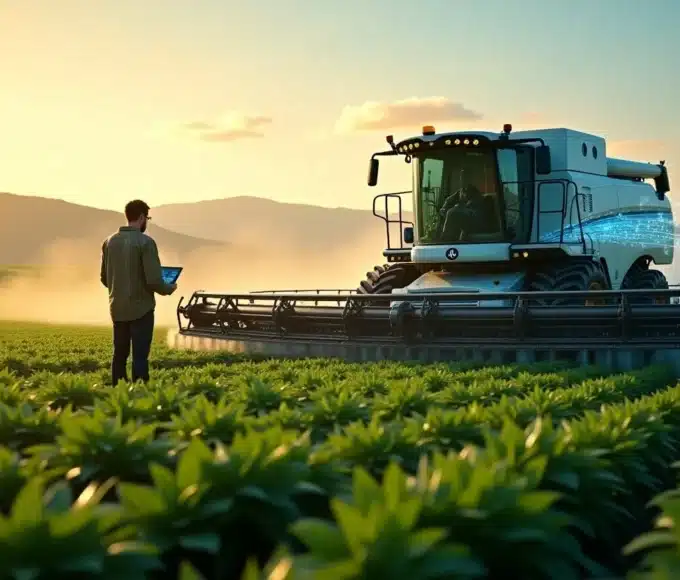

Leave a comment